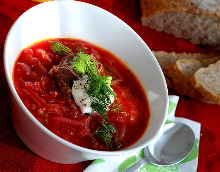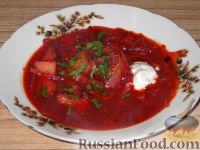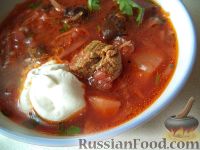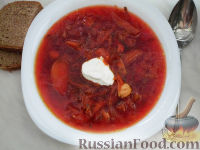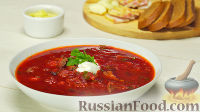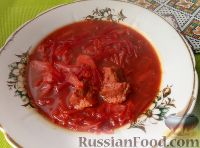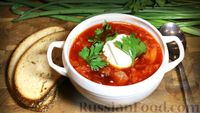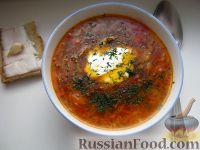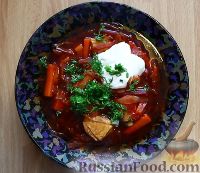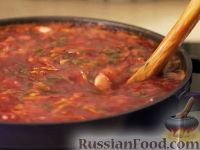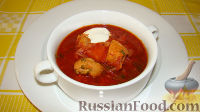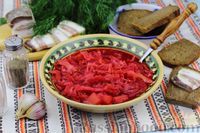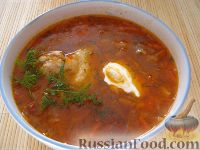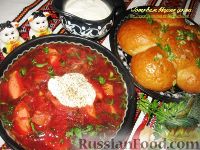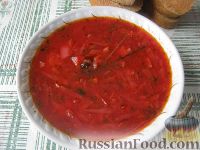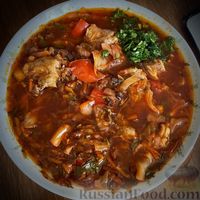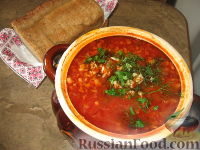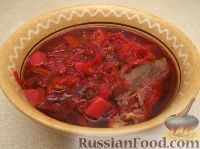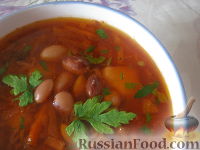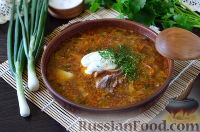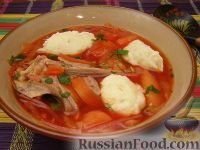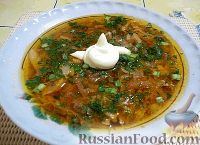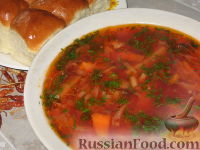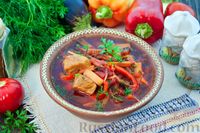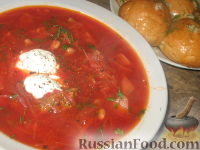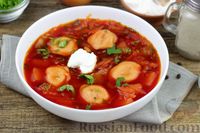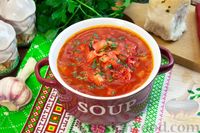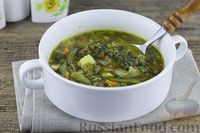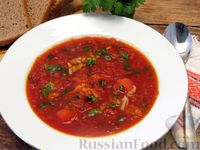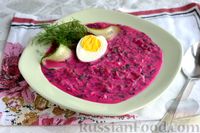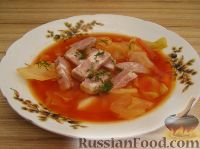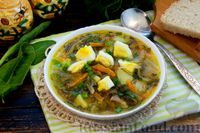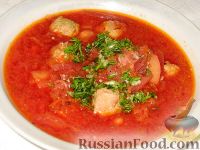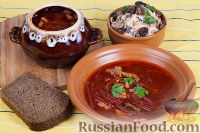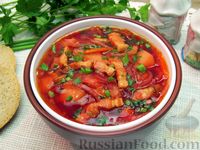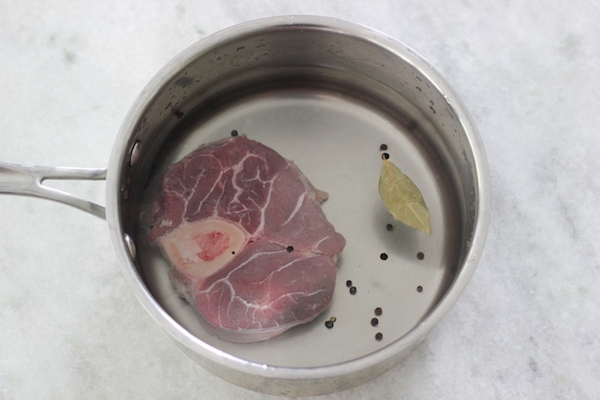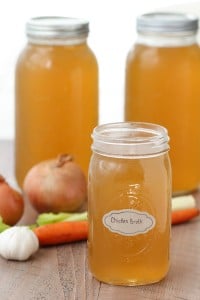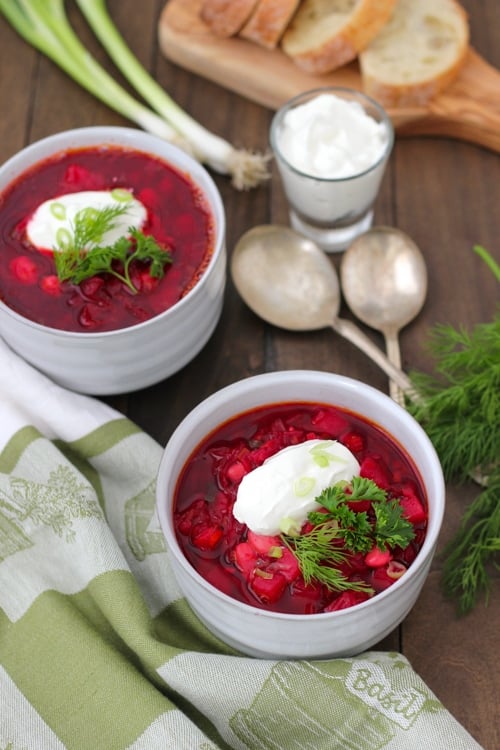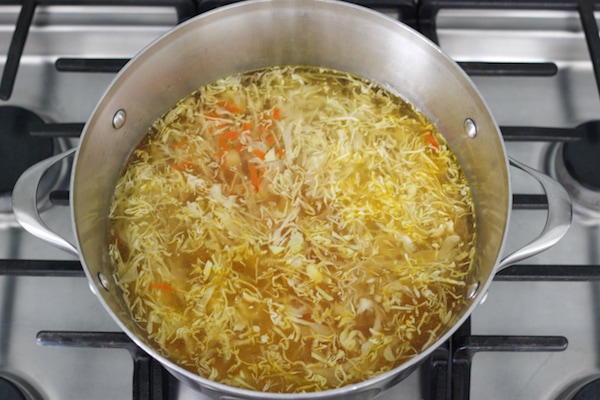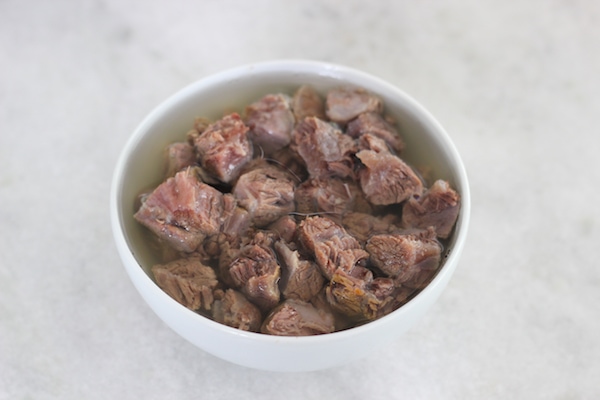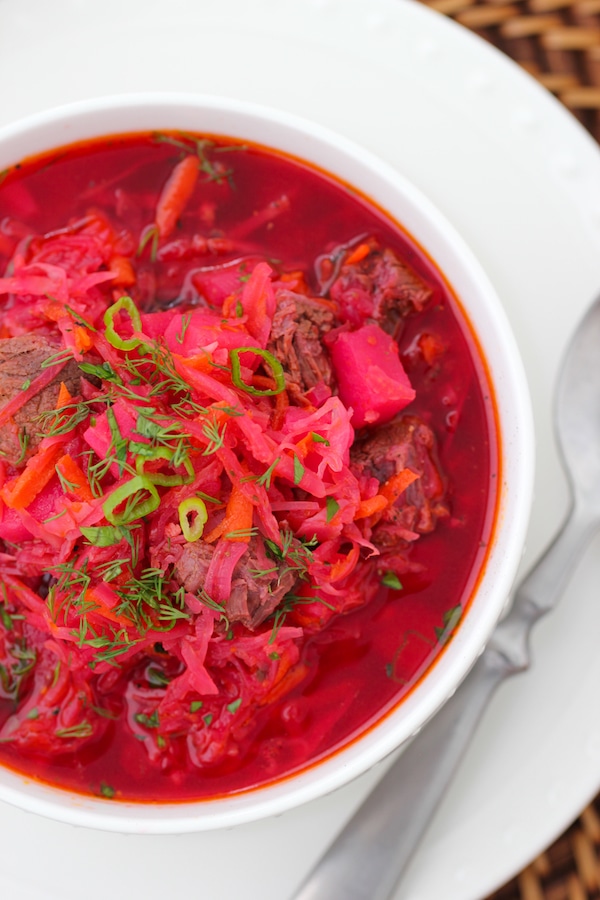How to cook borsch recipes
How to cook borsch recipes
Traditional borsch snacks and pastries (RECIPES)
They say the word “borsch” was long used to refer to all soups in Russia. And these were made from the most common products in any given region, which explains why there is such a variety of recipes both for borsch itself and for snacks and pastries to go with it.
1. Moscow borsch with vatrushki
Unlike other regions, Moscow borsch is made using smoked meats. “Real Moscow borsch is cooked in beef stock, but at the same time it must contain several types of meat and different meat delicacies, such as brisket, sausages and smoked meats,” says Vlad Piskunov, head chef at the Matryoshka restaurant. And only in Moscow are vatrushki(quark-filled dough rings) served with borsch. Unlike sweet vatrushki, which are prepared with curd or jam, vatrushkifor borsch are savory and smaller in size.
How to make salted vatrushki with quark: Mix a glass of warm milk, diluted yeast (15 g), eggs (2 pcs), 1.5 tablespoons of sugar and half a teaspoon of baking soda. Add sifted flour (3 cups), beat thoroughly, throw in softened butter (50 g) and a tablespoon of vegetable oil, and continue stirring until the dough stops sticking to your hands. Shape into a ball and leave in a warm place to rise for 40 minutes. Knead and let rise once more. Place the dough on a lightly floured board, roll into a rope shape, cut into small pieces and form balls. Place them on a greased baking sheet 4-5 cm from each other, and leave to rise for a further 15 minutes. Make a hollow in each vatrushka with a glass and fill with quark. For the filling, mix quark (500 g) with eggs (2 pcs), add 1 tablespoon of sugar and 1 tablespoon of salt (unheaped), plus parsley or dill (50 g) and 2 tablespoons of melted butter. Leave to stand for 15 minutes, brush with whipped egg and place in the oven for 20-25 minutes at 180°C.
2. Ukrainian borsch with garlic pampushki
Ukrainian borsch is most commonly made with pork stock and fresh cabbage. This borsch is served with pampushki – small fluffy buns soaked in vegetable oil with added garlic. Pampushki are baked mainly from yeast dough while the borsch is boiling, and served warm.
How to make garlic pampushki: Dissolve yeast (10 g), sugar (1 tsp) and salt (1 tsp) in warm water (250 ml, no hotter than 45°C). Add flour (400 g) and vegetable oil (2 tbsp) and knead. Roll the dough into a ball, cover with a towel and leave to rise for one hour in a warm place. Cut the dough into small pieces and roll into egg-sized balls, place compactly in a dish greased with vegetable oil and leave for another 30 minutes. Grease with egg yolk and place in the oven, preheated to 200°C, for 25 minutes. Add crushed garlic (5 cloves), vegetable oil (2 tbsp) and salt (1 tsp), and beat all together. You can also add greens. Remove the pampushki from the oven and brush immediately with garlic sauce. Cover with a towel and leave for 15 minutes.
3. Kuban borsch with cheese pie
Genuine Kuban or Krasnodar borsch uses a special variety of beetroot: light pink and striped, imparting a golden-pink color to the soup. Very sour tomatoes and “old” (seasoned) salo (cured pork fat) are also added to Kuban borsch. Best eaten with cheese pie.
How to make cheese pie: Slice cold butter (120 g) into pieces and rub with flour (220 g) into crumbs. Add room temperature milk (50 ml) and stir. If necessary, add more flour, knead the dough and place in the freezer for 15 minutes. For the filling, grate cheese (250 g), mix with eggs (2 pcs), salt (1 teaspoon) and grated garlic (1 clove). Spread the dough along the bottom of a dish, and lay the filling on top. Bake pie in the oven at 200-220°C until the top turns brown.
4. Northern borsch with kalitki
A Russian proverb says: “Borsch without porridge is a widower; porridge without borsch is a widow,” meaning that porridge can be served with borsch instead of bread. Cooks in Karelia make a two-in-one dish: kalitki (small open-faced pastries) with millet. These are rye-based pies prepared with a salty or sweet filling. The optimal filling for borsch is millet porridge.
How to make kalitki with millet: Pour warm milk (100 ml) into a deep bowl, add a little water and salt, and mix well. Pour in sifted flour (rye 200 g, wheat 30 g) and knead. Let the thick dough stand for 15 minutes. Cut the dough into balls, roll into flatbreads 1–1.5 cm thick and lay the millet porridge cooked in milk on top. Pinch the edges and grease the tops with egg. Bake at 200-210°C for 10–15 minutes. Grease the ready kalitki with melted butter.
5. What else to eat with borsch?
Classic borsch snacks include salo, pickles, garlic cloves and spring onions. And you can’t go wrong with Borodinsky rye bread or mushroom or cabbage pie, either. Borsch is often seasoned with smetana for a creamy flavor, and you can also try a shot of vodka.
READ MORE: How to cook borsch in a loaf of Borodinsky bread (RECIPE)
If using any of Russia Beyond’s content, partly or in full, always provide an active hyperlink to the original material.
The ultimate guide on how to cook borsch
The origin of borsch is unknown, and most likely it first appeared on the lands previously ruled by Kievan Rus. One thing is for sure, however, it now enjoys immense popularity and diversity all over Eastern Europe. In Ukraine, borsch is pointless without beets and lard. In Russia, it used to be more of a sour soup, with added hogweed leaves and cabbage, and even mushrooms were added. Potatoes, tomatoes and sweet peppers were added to borsch in the early 1930s. In Soviet times, this soup was always found on the menus of every restaurant and diner.
1. The bigger, the better
First of all, you have to understand that borsch is not prepared in small volumes. You’ll need at least a 3-liter pot to start. Don’t worry about having too much. Friends will find themselves at your doors when they know that you’re making borsch. And if not, this is the kind of soup that gets better on the second day, and you can keep savoring it because it never gets old.
2. Add a lot of meat and bones
The beginning of a great borsch is the meaty stock. Ribs, shank cuts or oxtails are great because they make your stock super rich. If you get bone marrow, unquestioningly add it. The famous writer, Mikhail Bulgakov, in his novel MasterandMargarita, mentioned the bone marrow as the best addition to borsch! Smoked pork ribs or hock will make your stock smoky and luscious. And don’t forget about the meat; there should be a lot of meat in borsch.
3. Mind your beets
After the stock issue is resolved, you can move to vegetables. The peculiarity of the borsch recipe is primarily in the way the beets are cooked. They can be prepared in several ways: steamed, boiled or baked, before adding them to the soup. We found baking to be the best way to do so because it concentrates the natural sweetness in this vegetable and preserves the vibrant beet color. The addition of a spoon of simple table vinegar will also help with the color. Cooked beets are mixed with bell peppers, followed by the addition of tomatoes and tomato paste. As a rule, onions, carrots and garlic are cooked separately. You can add the beets five minutes before the end if you’re afraid to color the potatoes. If that’s not about you, then just follow our instructions below.
4. A spicy one
After all the vegetables, one of the most essential parts of borsch is seasoning. Black pepper, herbs such as parsley and dill, bay leaf and extra garlic are very important for the taste. One other thing that adds a special character to your soup is cooking the vegetables with lard.
5. More sour cream, not less
The final touch is a spoonful of rich sour cream. It just adds this extra kick that will leave you completely exalted. After feasting on borsch like this you’ll have to take a short break, even though the divine smell of this soup won’t allow you to think about anything else.
Ingredients:
Cooking:
1. Prepare your stock. Place your meat in a large pot and cover with 3-4 liters of cold water. Add the bay leaf and a few black peppercorns. Bring the liquid to a boil, and skim off the foam and impurities. Once the stock no longer releases foam, lower the heat to medium and cover your pot with a lid. Leave the stock to cook for 2-3 hours.
2. When the meat is falling off the bone your stock is ready. Remove the bones and meat from your stock. Cut the meat into smaller pieces and put back in the stock. Discard the bones.
3. While your stock is cooking, prepare the vegetables. Wash your beets, toss them in oil and wrap each with aluminum foil.
4. Heat the oven to 200°C, and bake your beets for 1-1.5 hours until tender in the center. Once cooked, peel your beets and grate.
5. Dice the red bell pepper and tomatoes, and cook in a pan with some lard.
6. Once tender, add the grated beets and then a tbsp of sugar and the table vinegar. Cook for 3 minutes. Then, add tomato paste and cook for 3 minutes more.
7. Peel and grate your carrot.
8. Dice the onions and chop the garlic.
9. In a separate pan add lard, and cook the onions until soft and completely translucent. To your onions, add the grated carrot, and once it’s tender add the garlic. Cook for 1 more minute.
10. To your stock with meat, add your onion/carrot mixture first. Bring it to a simmer and cook for 3 minutes. Then add your beet mixture and bring to a simmer again.
11. While your soup is lightly simmering, peel and cut the potatoes into small cubes. Add to the soup and cook for about 8-10 minutes until tender.
12. Cut your cabbage into strips and add to the soup after the potatoes are cooked. The cabbage will take about 3 minutes to cook.
13. After all the vegetables have been added season your borsch with salt, black pepper and herbs. Now turn off the heat, put a lid on the pot and let the soup infuse for at least one hour.
14. After all that hard work is done, you can finally feast on your borsch. And don’t forget the sour cream!
If using any of Russia Beyond’s content, partly or in full, always provide an active hyperlink to the original material.
to our newsletter!
Get the week’s best stories straight to your inbox
Borsch – The Russian Beetroot Soup
Borsch is the famous soup in many Russian families, as well as many Eastern and Central European countries. The recipes of borsch vary, but vegetables (mainly beet) and sour cream are always the main ingredients. The beetroot used in cooking borsch gives the soup its trademark deep reddish-purple color.
Ingredients
Preparation
1. Boil the beef stock for at least 1.5 hours, strain the broth through clothing, seperate the meat from the bone and carve it.
2. Peel the raw beet root, cut it in thin two-inch strips and stew for half an hour.
3. Add cubed potatoes in the boiling broth. Add the stewed beet when the broth begins to boil again. Add bay leaf.
4. Cut the carrot the same way as the beet root, fry it all over and add into borsch.
5. Slice the onion, fry on both sides, add tomato paste. Mix everything and fry for some more time.
6. Take the fried onion off the stove and add mashed garlic.
7. Shred the cabbage finely and add (but not much) into borsch when the potato is almost cooked.
8. Cover the saucepan and boil borshch for 5 minutes. Then add fried onion with garlic and seasonings. Mix everything.
9. Cover borsch and cook for 3 more minutes. Then add cut verdure.
10. Take borsch off the stove and leave uncovered.
Tips for Cooking and Serving Borsch
1. Sour cream is served in a separate bowl or added into the plate with borsch right before serving it.
2. You may use veal or chicken instead of beef stock.
3. You may also grate beet root and carrots at steps 3 and 5 instead of cutting them in thin stripes.
How to Spell the Word Borsch
The Russian word for borsch is борщ. However the letter ‘щ’ doesn’t exist in English and you may encounter the following aternative spellings: borsh, borshch, borsch or barszcz.
Got questions?
Ask them in the Russian Questions and Answers — a place for students, teachers and native Russian speakers to discuss Russian grammar, vocabulary, pronunciation, and other aspects of the Russian language.
Борщи
Вкусный красный борщ с говядиной приготовить очень легко.
Борщ с курицей готовится быстрее, чем с другим мясом.
Знаменитый красный борщ любят за особенный аромат, удивительный вкус и насыщенный цвет. Идеальное сочетание овощей придают красному борщу тот индивидуальный вкус, благодаря которому он входит в список самых известных супов мира. Борщ подают в дорогих ресторанах и готовят дома. Всякий раз, когда есть возможность попробовать борщ, мы выбираем именно его.
Готовим сытный, наваристый красный борщ на мясном бульоне.
Предлагаю рецепт очень вкусного и насыщенного красного борща со свининой. Он получается кисло-сладким, ярко-бордового цвета. Это старинный рецепт моей бабушки. Рецептов борща множество, но обязательно попробуйте мой украинский борщ. Если приготовите его строго по рецепту, у вас получится идеальный борщ.
Представляю вашему вниманию простой рецепт борща. Именно по такому рецепту готовит борщ моя мама. Получается очень вкусно, быстро и, главное, несложно. Попробуйте приготовить, не пожалеете!
Чем отличается русский борщ? Прочитала, что его варят без картофеля. Кроме того, капусты кладут меньше, чем в украинский борщ, и не добавляют сало. Борщ можно приготовить и на мясном бульоне, и постный.
Вкуснейшее первое блюдо со свеклой и капустой. Это один из основных рецептов борща. Готовится борщ со свининой.
Чтобы приготовить вкусный борщ, необязательно варить его на мясном бульоне. Борщ по данному рецепту получается тоже наваристым, густым. Свёклу, морковь и лук нужно предварительно обжарить и потушить с томатной пастой, чтобы они раскрыли свой вкус и аромат. А для тех, кто всё-таки любит посытнее, можно подать борщ с кусочком сала, которое только улучшит вкус блюда.
Вкусный борщ, отличающийся от других борщей не ингредиентами, а самим процессом приготовления и необычной затиркой, которая, наверное, и играет не последнюю роль во вкусе борща.
Многие писатели часто в своих произведениях упоминают блюда, которые хорошо были известны в их времена и подзабыты нами. У А.П. Чехова в рассказе «Сирена» встречаем такие строки: «Но лучше всего, благодетель мой, борщок из свеклы на хохлацкий манер, с ветчиной и с сосисками. К нему подаются сметана и свежая петрушка с укропом.» А почему бы не приготовить этот замечательный и вкусный борщ на хохлацкий манер?
Такого борща я не ела никогда. Попробуйте, Вам наверняка понравится наваристый борщ «Селянский».
Этот борщ я приготовил по «рецепту еврейской мамы» (книжка так называется).
Знаете, почему у наших бабушек-прабабушек получался такой вкусный борщ? Они его томили в печи. У нас печей нет, но есть духовка и керамический горшок. И борщ получился очень наваристым, ароматным и вкусным.
У каждой хозяйки рецепт борща свой. А если летом три хозяйки соберутся на дачной кухне, чтобы приготовить борщ? У нас получилось вкусно, рецепт одобрили )))
Это самый овощной борщ из всех, что я знаю.
Главной особенностью кубанского борща считается густота, а также наваристость и насыщенный цвет. Готовится кубанский борщ на мясном бульоне. Овощи в борщ кладут по-разному, но с помидорами и сладким перцем будет вкуснее. По этому рецепту варится борщ со свёклой и молодой свежей капустой. И добавляется заправка из сала с чесноком и зеленью. Сказать, что борщ получается вкусным, – это не сказать ничего!)
К приготовлению этого борща надо готовиться, как к празднику. Заранее приготовить свекольный квас, купить говядину и баранину, ну и овощи, которых в борще много и разных. Я же говорю – праздник вкуса!
Вкусный борщ с галушками.
Недавно мне подумалось: что за кулинарный блог без рецепта вкуснейшего борща? Надо срочно восполнять пробел.
Хотя все борщи хороши, но гетманский борщ считается одним из самых вкусных. Его отличает от других борщей и то, что дает ему неповторимый вкус – баклажан. Да, обыкновенный синий свежий баклажан. Попробуйте сварить борщ с баклажанами – я думаю, что вам тоже понравится.
Предлагаю приготовить вкусный и сытный борщ. Кроме стандартного набора овощей, в этот борщ добавляют баклажаны. Готовится борщ с баклажанами на говяжьем бульоне, получается густым и очень ароматным. Сытные баклажаны очень хорошо дополняют борщ, делают его вкус ещё «богаче» и насыщенней.
В жаркую погоду хочется на обед чего-нибудь вкусного и освежающего. Поэтому предлагаю приготовить такой необычный холодный суп из свеклы и малосольных огурцов, на простокваше. То что надо в такую жару.
Наваристый, ароматный, густой черниговский борщ – один из самых вкусных украинских борщей. Борща невозможно сварить немного. Даже если брать всего понемножку – сколько овощей надо поместить в кастрюлю. Но борща никогда не бывает много. Вкусный борщ все едят с удовольствием.
Очень вкусный постный борщ получается благодаря добавлению сыворотки. Борщ на сыворотке выглядит ещё ярче, а его вкус более насыщенный. Сыворотка придаёт необходимую кислинку, за счёт которой хорошо сохраняется и цвет борща. Даже при отсутствии мяса, постный борщ на сыворотке очень вкусный, лёгкий, но в то же время достаточно сытный.
Необычный борщ с фрикадельками готовится без капусты, её успешно заменяет щавель. Также щавель придаёт необходимую кислинку. Аппетитные фрикадельки из мясного фарша отлично дополняют борщ со щавелем и уменьшают время приготовления первого блюда.
Уж не знаю, с чего у этого борща такое название. Но получился флотский борщ вкусным, так что делюсь рецептом.
Постный борщ с жареной сельдью. Прелесть этого борща еще в том, что его можно есть горячим и холодным, прямо с холодильника. Очень хорошо для жаркого летнего дня.
Очень вкусный красный борщ к постному столу. Да не простой, а с фасолью:)
В весенне-летний сезон зелёный борщ становится частым блюдом на наших столах. Но часто ли вы встречали зелёный борщ с капустой? Благодаря такому небольшому нововведению зелёный борщ получается более густым, а вкус становится интереснее и насыщеннее, при этом кислинка щавеля всё так же отчётливо чувствуется.
У сибирского борща, несмотря на наличие кислой капусты, очень мягкий вкус. Достойный представитель борщей.
Один из быстрых способов приготовления яркого, ароматного красного борща с куриными фрикадельками.
Хотя все борщи хороши, но гетманский борщ считается одним из самых вкусных. Его отличает от других борщей и то, что дает ему неповторимый вкус – баклажан. Да, обыкновенный синий свежий баклажан. Попробуйте сварить борщ с баклажанами – я думаю, что вам тоже понравится.
Предлагаю приготовить вкусный и сытный борщ. Кроме стандартного набора овощей, в этот борщ добавляют баклажаны. Готовится борщ с баклажанами на говяжьем бульоне, получается густым и очень ароматным. Сытные баклажаны очень хорошо дополняют борщ, делают его вкус ещё «богаче» и насыщенней.
В жаркую погоду хочется на обед чего-нибудь вкусного и освежающего. Поэтому предлагаю приготовить такой необычный холодный суп из свеклы и малосольных огурцов, на простокваше. То что надо в такую жару.
Наваристый, ароматный, густой черниговский борщ – один из самых вкусных украинских борщей. Борща невозможно сварить немного. Даже если брать всего понемножку – сколько овощей надо поместить в кастрюлю. Но борща никогда не бывает много. Вкусный борщ все едят с удовольствием.
Классический борщ (красный борщ) – это знаменитый свекольный суп, которым по праву могут гордиться народы восточной и центральной Европы. Особенно древнюю историю борщ со свеклой имеет в Украине, поэтому часто его называют украинским борщом. Но есть еще и борщ литовский, польский, русский, кубанский, московский и даже сибирский. И варят его по-разному в каждом отдельном регионе да еще и с вариантами: мясной, постный, а летом и холодный борщ, который часто называют холодником, свекольником. Объединяет главное – везде, где готовят борщ, он относится к самым любимым кулинарным блюдам. А умение вкусно готовить настоящий борщ в этих краях считается одним из основных добродетелей женщины, почти не уступая красоте и доброте. Поэтому приготовление борща – это некое таинство, а сам борщ для славян – один из главных афродизиаков. Вкусное это слово – борщ!
Зелёный борщ – это щавелевый суп, тоже блюдо национальных кухонь восточной Европы. Зелёный борщ не является разновидностью классического борща, имеет совершенно другую рецептуру и совсем другой цвет – зелёный. Он получается от щавеля и других зеленых ингредиентов.
Borsch – Борщ
Share this:
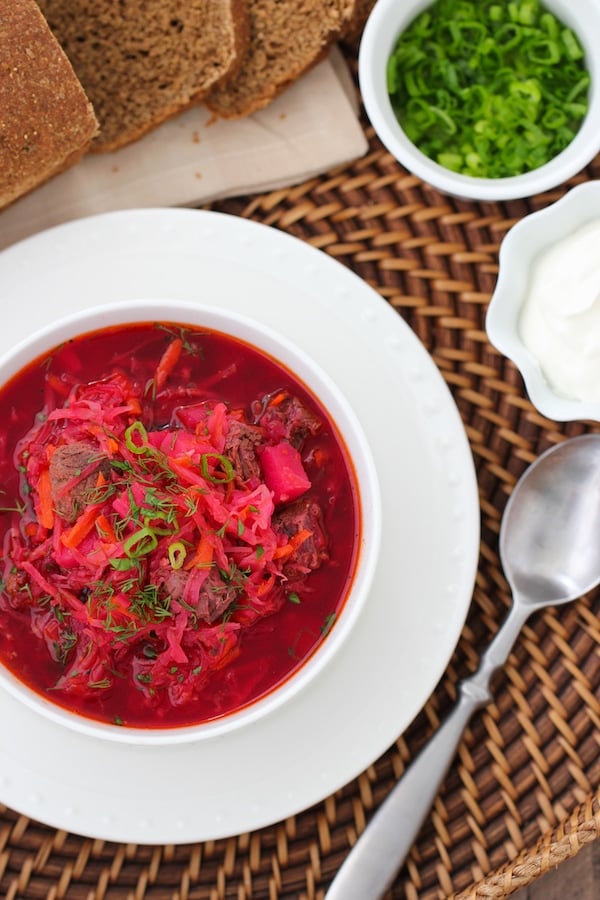
I grew up in Central New York, where my parents have a beautiful property. Every year they plant a garden and grow all kinds of vegetables. During summer vacation I would stroll through the dewy grass and pull out beets, carrots, onions, and garlic out of the rich soil.
Today, I walk through the aisles of the farmer’s market, loading my basket and dreaming of one day once again breathing the fresh air and enjoying my own garden. Although it’s not the same, the Borsch is still a great connection to think of the roots of our food. Not only is it fantastic during the summer when all the produce is amazingly fresh, but it’s such a comforting dish to enjoy in the cold winter months, whether you live in snowy New York or sunny Florida.
Video Recipe of How To Cook Borsch
What Type of Beef Is Used For Borsch?
You can use beef short ribs, beef shank or oxtails, which all are on the bone, but I also like to use beef chuck or beef top sirloin too.
Cut the beef chuck or top sirloin into bite-sized pieces and place it in a small pot with just enough water to cover the beef by about an inch. I love using my Instant Pot (an electric pressure cooker) for cooking the beef while I am cooking the rest of the Borsch. If you’re using the Instant Pot, cook the beef ribs, shank, oxtail or chuck on Manual mode, High Pressure for 45-65 minutes and the beef top sirloin only needs 20 minutes to cook.
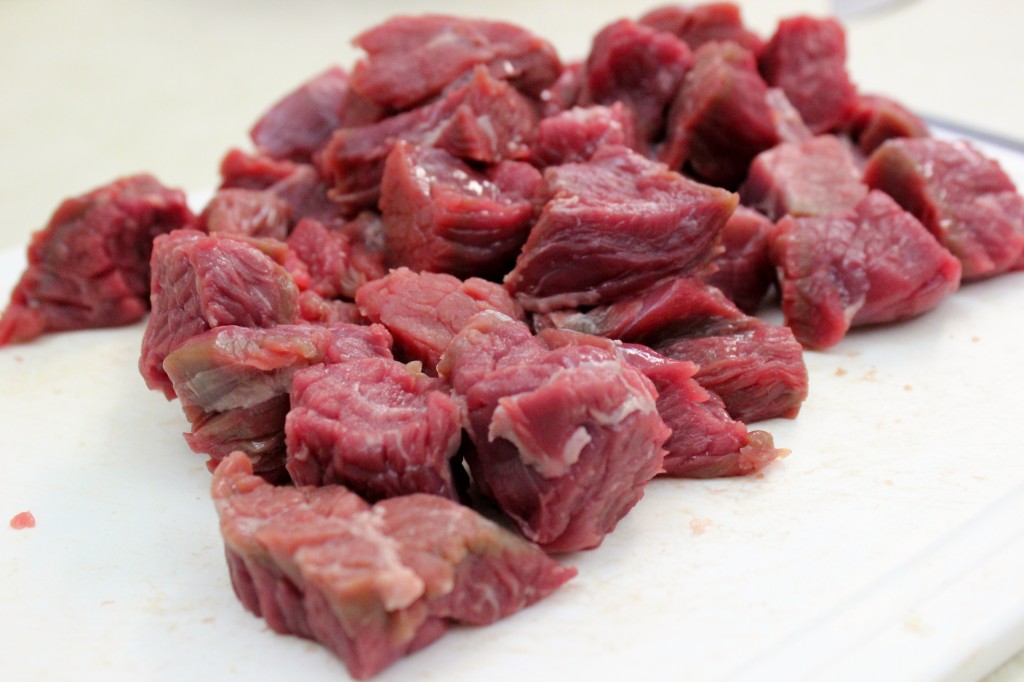
Chicken Broth
I usually make chicken broth in large batches and store it in my freezer. You can use store bought chicken broth if you don’t want to use homemade broth.
You can certainly omit the chicken broth and just use beef broth that you’ll get when cooking the beef, just make more broth. You can also add some beef bones and add 11 cups of water to the pot. Strain the broth when the beef is falling apart and fork-tender. Return the broth to the pot and continue with the recipe.
However, I prefer using chicken broth and cooking a bit of beef in a small pot on the side, while I am making the Borsch in a big pot. I think the flavor of Borsch based on a chicken broth is the best, at least in my opinion.
In addition to the broth, you can add some water to make the Borsch the consistency that you like. You can add up to 4 cups of water or not add any additional water at all, if you like the Borsch to be thicker in consistency.
Vegetarian or Vegan Borsch
It is very easy to make Borsch without meat. Use vegetable broth instead of chicken broth and use oil for sautéing the vegetables, not butter and garnish the soup with vegan sour cream or don’t use sour cream at all.
Instead of meat, you can add beans or dry mushrooms. Dry porcini mushrooms are my favorite.
Cooking the Vegetables
While the beef is cooking, prepare the rest of the Borsch in a large pot or Dutch oven.
Heat the butter or oil and add the onion, carrot, and celery. Season with salt and ground black pepper. Cook on medium-low heat for 6-8 minutes.
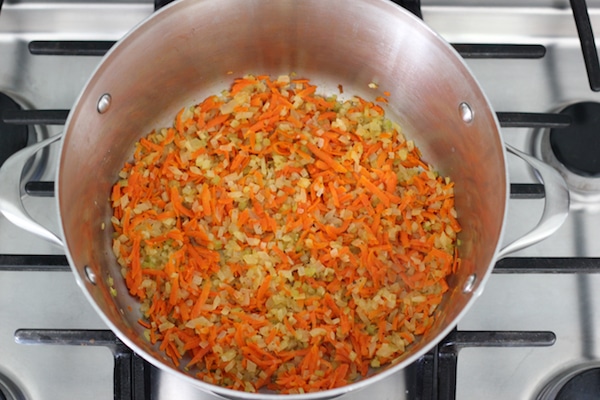
If you are using really young green cabbage, you may want to add it after the potatoes are halfway done cooking, since they don’t take as long to cook as older, more white cabbage. 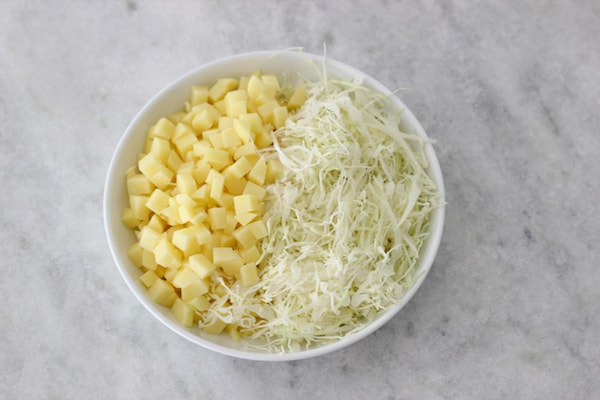
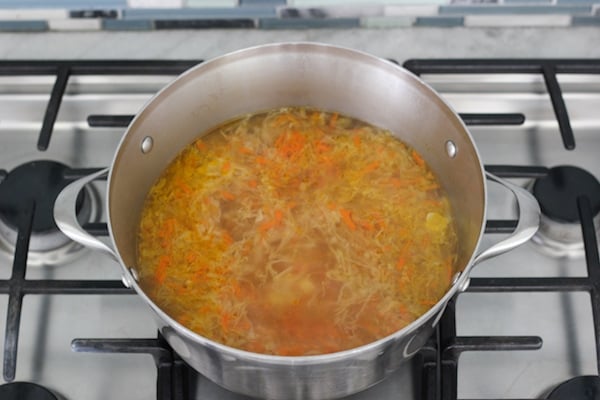
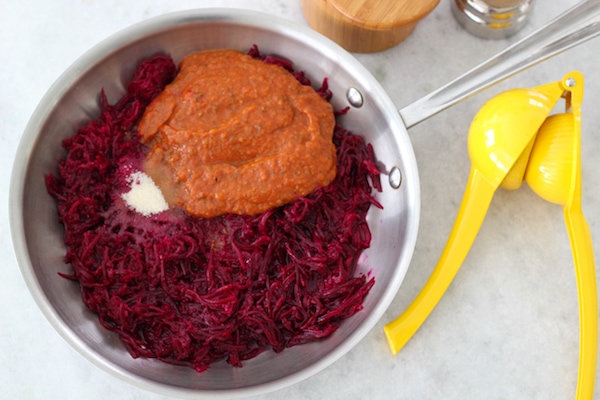
I prefer using roasted beets for Borsch, but you can also cook the beets in a pot with water or even use raw beets, but you will have to cook them much longer on the skillet. I usually roast the beets in advance. Here’s how to roast beets: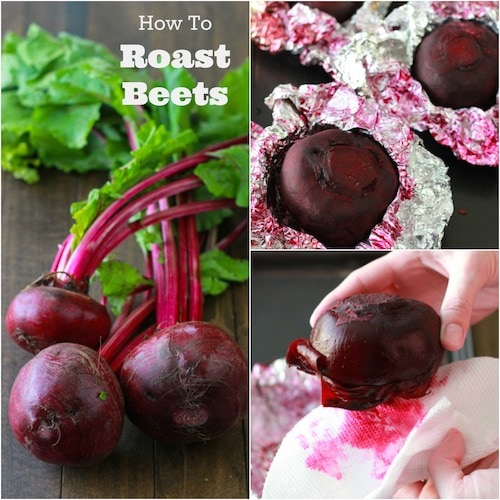
Cover the skillet, bring the water to a boil, then reduce the heat and simmer on medium heat for about 15 minutes, until most of the water and tomato sauce is absorbed. 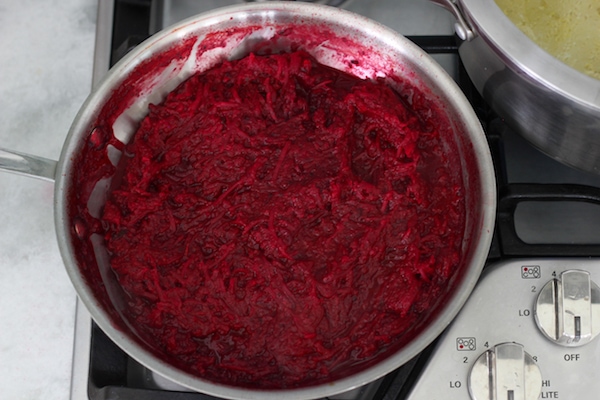
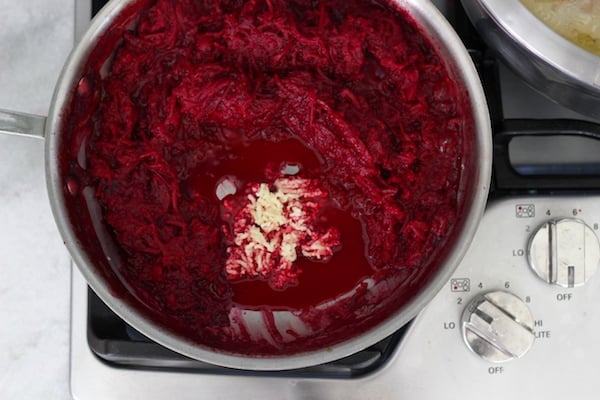
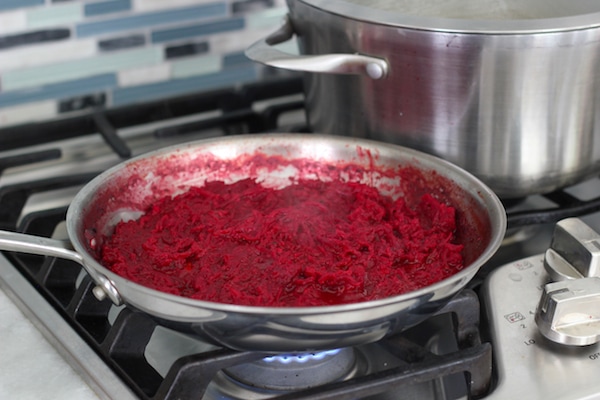
When the potatoes are tender, add the beets to the soup and take Borsch off the heat. By this time, the beef should be fork-tender. 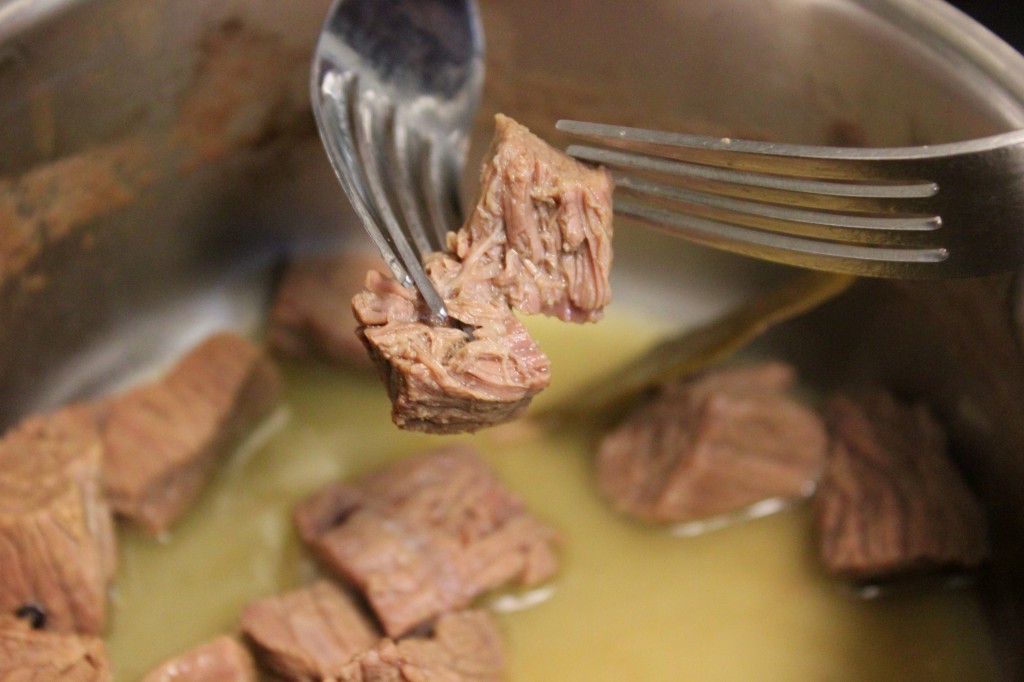
Season with salt and pepper, if needed. Garnish with finely chopped fresh dill and green onions. We Russians like to add a dollop of sour cream to our bowl of Borsch.





















